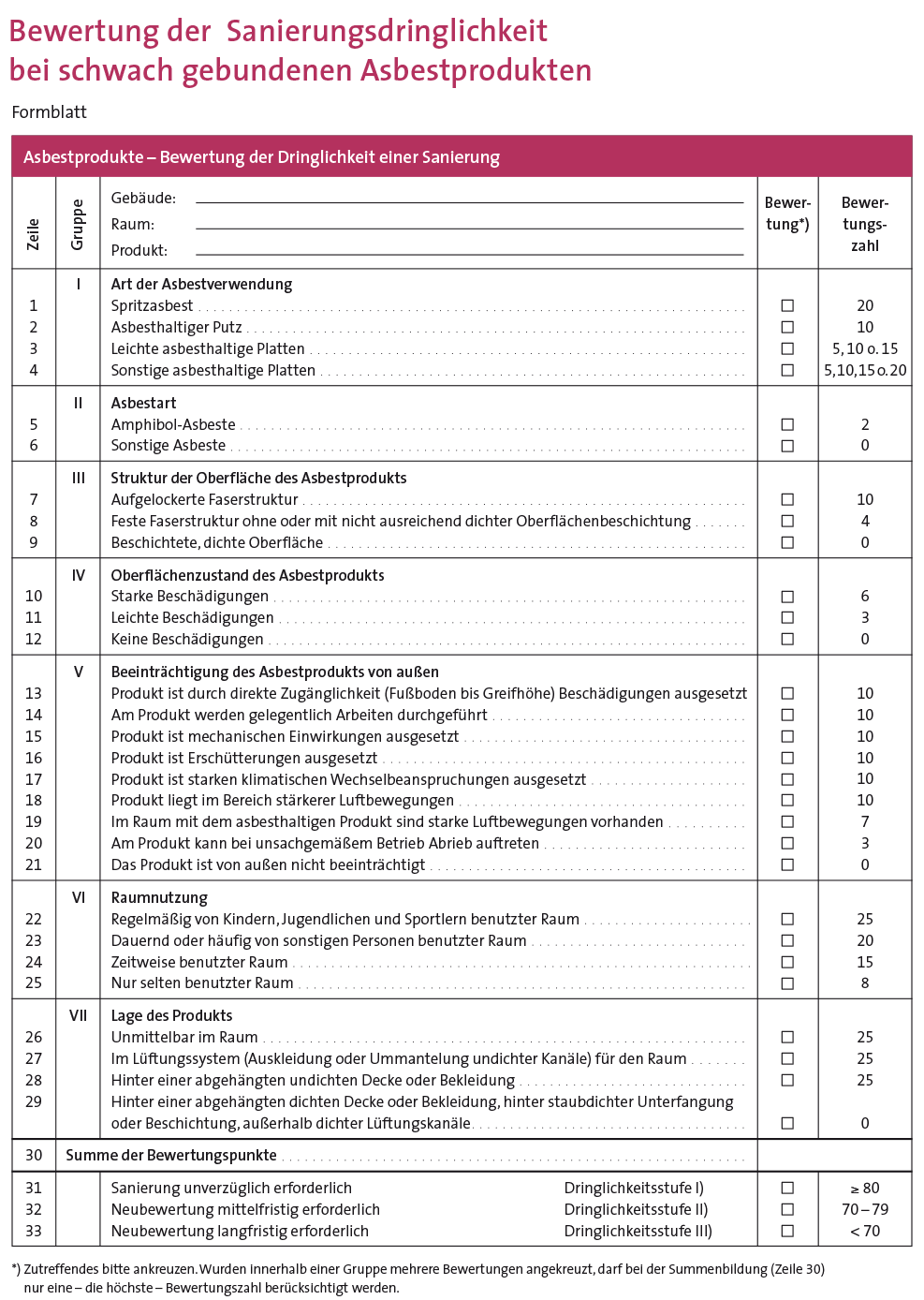
[Translate to Englisch:] Die Asbestrichtlinie
Terms, legislation and classification
There have already been several assessments in the past, most recently in 2012. The asbestos directive not only stipulates that buildings must be assessed, but also the time intervals at which this must be done.
On the one hand, it is important to know whether and, if so, where asbestos was installed. And is this so-called "loosely bound" or "firmly bound" asbestos? While the firmly bonded asbestos (e.g. in asbestos cement) is hardly released unless one makes a massive mechanical effort, the loosely bonded asbestos can be released more easily and is therefore subject to stricter conditions.
The two terms are precisely defined (see also limit values):
- Solid-bound -> density > 1.4 t / m3
- Loosely(waekly) bound -> density < 1.0 t / m3
Everything in between must be evaluated by an expert and assigned to one of the two groups mentioned above.
From the point of view of building law (Landesbauverordnung Ba-Wü), knowledge of all weakly bound - and only this - asbestos products "suffices" for the protection of users. For ASI work, both weak and solid bound products must be known and evaluated.

The evaluation of the urgency of renovation follows a fixed scheme in accordance with the asbestos guideline. On the one hand, this facilitates the evaluation, complicates individual interpretations and thus makes results comparable.
Although the evaluation should only be carried out by experts and experienced persons - and only then would it be legally binding - it can certainly be used by anyone to get an impression of how it works and at least to assess the situation.
So there is no reason why you shouldn't "evaluate" the situation yourself using this table. Click here to download the Excel table (German only!). The calculation is done automatically. The table is largely self-explanatory. The cells, which are marked with a red triangle in the corner, contain further information as a filling aid.
How to fill-in:
The table is divided into 7 groups, which characterize the type and use of the asbestos product. Of course, you must know in advance which product you want to evaluate.
Only the highest number of points per group will be scored, even if you (can) mark several fields.
At the end, the total number of points decides in which degree of urgency the product is classified.
Please inform the occupational safety department if this is the case:
- you suspect or know a product containing asbestos in your work area,
- this has not already been assessed in the asbestos register and
- the assessment gives priority level I.
The evaluation results in 3 so-called urgency levels for the renovation:
- Urgency level I
Immediate remediation
- Urgency level II
Revaluation necessary in the medium term. Uses with this evaluation shall be re-evaluated at intervals not exceeding two years.
- Urgency level III
Long-term revaluation required. Uses with this valuation shall be revalued at intervals not exceeding five years.
Now it is also clear where the term "revaluation" comes from. Logically, it requires a previous evaluation.
However, the term "immediate" is interpreted in the Asbestos Directive as being quite unspecific:
Products evaluated urgency level 1 are to be remediated immediately for security purposes. If the final remediation ... is not immediately possible, provisional measures must be taken immediately ... to reduce the concentration of asbestos fibres in the room if it is to continue to be used. The final remediation ... , however, must be initiated after three years at the latest.
